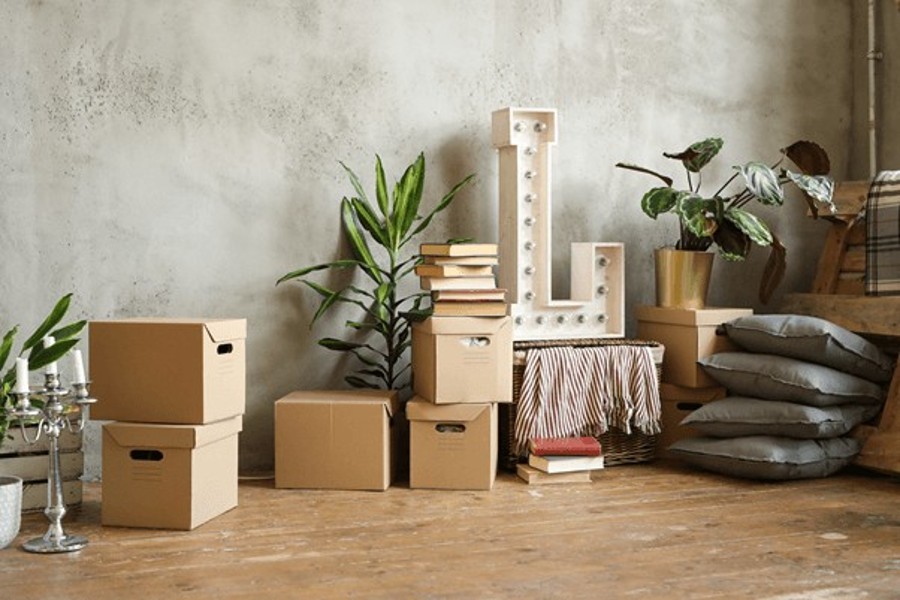
Shifting furniture from one place to another can often seem like an overwhelming task, fraught with potential risks and challenges.
However, with careful preparation and the application of proven techniques, this process can be transformed into a manageable and even streamlined experience. This expanded guide aims to equip you with a wealth of tips and insights, empowering you to handle your furniture moving needs with the expertise of a seasoned professional.
Whether you’re rearranging a room or relocating to a new home, these strategies will guide you through each step, ensuring that your move is carried out safely and effectively. For those seeking additional support, enlisting reliable & professional moving labor can provide an added layer of expertise and efficiency, transforming a daunting task into a smooth and successful endeavor.
Planning and Preparation
Before you start moving furniture, it is important to create an inventory list of all the things you are going to bring with you. After this, make a plan of which item goes first and what stuff comes afterward. The general rule of thumb is that large items should go in the back of the cargo hold. This means you will have to do the heavy lifting at the beginning of your move. Gather the right equipment such as furniture pads, moving blankets, bubble wrap, and plastic stretch wrap.
Disassembling Furniture
When possible, take the time to dismantle your furniture completely. This will make the furniture much easier to move, prevent damage while moving and make it easier to pack your moving truck. Here are some pieces that you should consider disassembling: Remove the legs and tops from all tables, if possible Take bed frames entirely apart, including the headboard and footboard Remove knobs and other removable pieces from dressers and desks Remove the cushions and legs of couches and chairs.
Lifting Techniques
Safety is your priority. Many injuries can occur if you are not careful, so if you don’t feel like you can do this, hire movers to do it for you. When lifting something from the ground, bend your knees and try to put weight on your legs, not on your back. Keep your legs wide apart, and your balance will be better when you grab something. When grabbing bulky, massive stuff, make sure you grab it from the bottom and keep it close to your thighs and chest when carrying. This way, you will have more support and balance and put less strain on your back.
Moving Heavy Furniture
When moving heavy furniture, it is important to use furniture moving equipment such as furniture sliders or moving blankets under the piece of furniture so it easily slides across the floor when you push or pull it. Work with a partner wearing a shoulder dolly to carry awkwardly-shaped items. Set the furniture on the lifting strap and lift from each side to support the weight. If you need to move furniture upstairs, use a two-wheel dolly.
Preparation: Assessing the Task
It’s essential to measure your furniture and create a layout plan for your new space before moving. This step helps to ensure that everything fits and minimizes the need for rearranging later. Assessing the room and the furniture involves considering the size of doorways, the layout of the house, and the weight of the furniture.
Gathering Necessary Equipment
For a smooth move, you’ll need tools like furniture sliders, lifting straps, and dollies. Furniture sliders protect floors and make moving heavy items easier, while lifting straps help reduce strain by transferring weight away from your back. Dollies can be indispensable for transporting large, heavy items with less effort.
Safety Measures and Attire
Protective clothing and shoes are crucial to prevent injuries during the move. Clear your path of any obstacles and consider wearing thick shoes and long-sleeve shirts for added protection. This precaution is especially important when handling heavy or awkwardly shaped items.
Disassembling Furniture
Disassemble any furniture that you can to facilitate easier movement. Take photos before disassembling for easier reassembly later. For parts that cannot be removed, such as drawers or doors, secure them to prevent them from opening during the move.
Using Furniture Sliders
Place sliders under each leg or corner of your furniture, especially on carpets or hardwood floors. This helps protect the floors from scratches and makes it easier to move heavy items across different surfaces.
Lifting Techniques
Proper lifting technique is key to avoiding injuries. Bend your knees, keep your back straight, and lift with your legs, not your back. If a piece of furniture is too heavy, always ask for assistance rather than trying to move it alone.
Moving Furniture Through Doorways
When moving furniture through doorways, use techniques like angling, curling, or even removing parts of the furniture if necessary. Sometimes, removing the door or door stop molding can provide the extra space needed to move large items.
Transporting Furniture in a Vehicle
Plan the loading order for the moving truck, placing heavy items towards the back and around the sides to help balance the load. Secure all items properly to prevent them from shifting during transport, which could lead to damage or safety issues.
Unloading and Reassembling Furniture
Carefully unload and reassemble your furniture. Follow the photos and notes you took during disassembly to ensure that everything is put back together correctly. Check all connections and fixtures to ensure that the furniture is stable and safe to use.
Final Checks and Adjustments
Once everything is in place, make any necessary adjustments to ensure that the furniture fits well in the new space. This might include slight repositioning or even additional disassembly and reassembly for optimal placement.
Cleaning and Maintenance Post-Move
After moving, clean your furniture to remove any dust or debris accumulated during the move. Check for any maintenance needs, such as tightening screws or lubricating hinges, to ensure that your furniture remains in good condition.
Conclusion
Moving furniture can be a daunting task, but with proper planning, the right tools, and safe lifting techniques, you can move your furniture like a pro. Remember to take your time, ask for help when needed, and prioritize safety to ensure a successful and injury-free move.
- LISC CEO Michael T. Pugh Recognized Among 2024 Worthy 100 Leaders
- NY Lawmakers Celebrate Historic MENA Data Recognition Bill Signed By Hochul
- Sponsored Love: Leadership Skills Training Courses: Invest In Your Future Today
- Senator Hoylman-Sigal Calls On Independent Schools To Adopt NYC Public School Calendar
- Mayor Adams Celebrates 65 Million NYC Visitors In 2024, Second-Highest Ever
Become a Harlem Insider!
By submitting this form, you are consenting to receive marketing emails from: . You can revoke your consent to receive emails at any time by using the SafeUnsubscribe® link, found at the bottom of every email. Emails are serviced by Constant Contact









